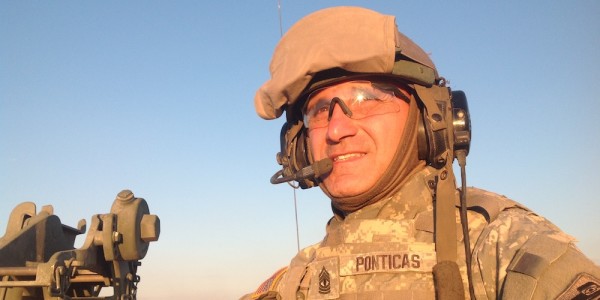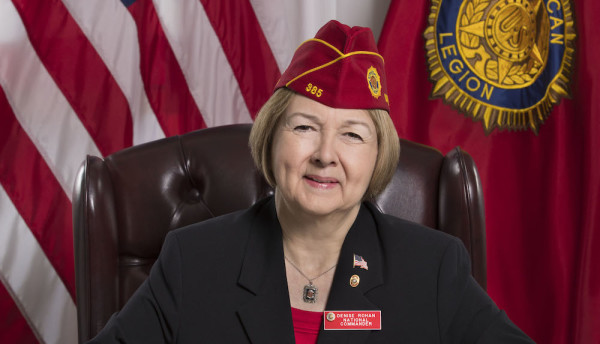Retired Marine Lt. Gen. Gregory Newbold’s recent commentary seeks to emphasize the importance of having a military consistently focused on lethality. He highlights that to win wars, both military and civilian leadership must place lethality as the top priority — lethality does win battles and stymies gratuitous loss of life for our forces. Lethality is critical.
“To be true to its purpose,” Newbold argues, “the U.S. military cannot be a mirror image of the society it serves.”
The thing is, our military will never be a mirror image of the society it serves unless we bring back the draft. It takes a unique personality to decide to enlist in the all-volunteer era. And he’s wrong to imply that lethality and inclusivity are mutually exclusive, and wrong to imply that inclusivity is the root of modern institutional military woes.
It’s not inclusivity — gender integration, racial diversity, or “softness” — that’s the problem. Making such a sweeping assertion, without providing research or statistics to bolster claims, and glossing over important nuances, is irresponsible and oversimplifies complex 21st-century issues.
The root problem is the civil-military divide: the gap of life experiences, philosophies, and geography that exists between civilians and servicemembers. Solid paths to narrow it are hard to find. But that is what is killing lethality. Inclusivity is a way to help fix it. Battlefield superiority in today’s world is facilitated by recruiting, and then being able to retain, young people in the military. And that’s especially important when China has 2 million people in its ever-growing armed forces, compared to 1.3 million in the U.S. military. Inclusivity starts with our youngest recruits.
Attracting new recruits is going to require continued military cultural shifts. Generation Z includes young people born currently between the ages of 10 and 25 — high school and college graduates the DoD wants to recruit — and will for years.
Studies show that Gen Z has different cultural values than Millennials and Gen X. Cultural change is uncomfortable and frustrating, but whether or not older generations agree with those changing values really doesn’t matter. Those changes will happen regardless.
The military has to care about Gen Z’s values if it expects a big enough pool of potential recruits. And Gen Z cares about things like individual expression and authenticity, openness to understanding different cultural and social groups, social and corporate responsibility and ethics. And they’re “radically inclusive.”
Gen Z, and changing national culture, also make things like prioritizing mental and emotional health a requirement. It’s not “sensitivity.” It’s continuous de-stigmatization to help all of us better understand our mental health to help with things like self-awareness, personal relationships, and emotional regulation. Better mental health means better readiness, too.
And common sense says “sensitivity” (or as Newbold also offers, “compassion”) might improve suicide rates or sexual violence rates. Or it could energize focus on resolving horrendous barracks conditions, and taking care of little things like dumb military rules.
Recruiting a sufficient all-volunteer force from today’s narrow pool of young people is hard enough when over 70% of them are ineligible for military service due to lack of education, health issues, or legal issues. Progressing military culture helps generate a little more interest from potential recruits.
Lethality also takes a hit when we lose so many female service members annually. 30% more women than men separate every year due to issues like outdated policies, lack of decent family planning and care options, and sexual violence.
Fortunately, some general officers have finally caught on to the idea that taking better care of their people, instead of relying on industrial recruiting and mass turnover, will make a more lethal force with more maturity, better career flexibility, and better knowledge retention. That’s talent management, not merely “compassion.”
What makes people want to leave the military? Racism, harassment, toxic leadership, bureaucratic idiocy, and people feeling like they have no control over their lives and futures. Gen Z won’t be attracted to joining a military that isn’t dedicated to a little progress.
Newbold further claims that highlighting differences undermines cohesion and morale, resulting in failure, observing that Critical Race Theory (CRT) is destructive to the nation and divisive. But Critical Race Theory isn’t destructive. The fact that most Americans don’t know what it is, or embrace falsehoods about it, is what’s destructive. And saying that the force is color-blind is a big middle finger to people of color whose experiences tell us that military color-blindness is a fallacy.
Meanwhile, Newbold’s “scientific evidence” doesn’t add up on gender integration harming lethality. Take the Marine Corps: As of March 2020, there were 231 female Marines serving in combat arms billets. Two women have passed the Infantry Officer Course, and there are zero female Marine Raiders.
Changing standards for women to be pushed through combat training anywhere in the military is wrong and hampers real inclusivity and equality. But military and civilian leaders who really believe that a couple of hundred female grunts serving alongside 30,000 infantrymen are what’s going to prevent the Marine Corps from winning the next war are more problematic.
Plus, it’s hard to make gender integration “work” when women who serve still don’t have properly fitting body armor and are still fighting body composition standards rooted in early 19th-century science (which harm both women and men).
And the idea of a woman being able to have a ponytail and correctly see out from under her kevlar is so earth-shattering that the Marine Corps still has not approved women to wear hairstyles like braids or ponytails, despite the other services already making changes.
No one wants simple policy changes — like a memo on ponytails — to take years to write. But that’s what’s happening. Ineffectiveness at the highest levels of slow military bureaucracy. It’s that continuous unwillingness to adapt to a changing world that’s harming lethality.
This bureaucracy breeds poor and injudicious employment of military forces by civilian politicians. The Obama administration is still noted for its haughty indifference to the military. Assuming victory in Iraq was guaranteed, then-President Obama rebuffed his military advisors and created a tidy power vacuum for ISIS in 2011. At the other end of the spectrum, the Trump White House is known for hyper-military patriotism, and almost deploying active-duty forces to U.S. cities in 2020. Most recently, President Biden has “rejected” the Army’s investigation of last summer’s withdrawal from Afghanistan. His denial underscores the corrosive friction, and distance, between politicians and military leadership. It hurts troops on the ground the most.
All three administrations represent the dangers of this divide and how it leads to a fundamental misunderstanding of the nation’s armed forces, and an inability to comprehend how to most effectively, and judiciously, employ them. This “chickenhawk” mentality harms lethality and gets U.S. service members killed.
Narrowing the gap is a two-way street — sort of like understanding how the Five Love Languages work — knowing what language of love you prefer is great. But it means nothing if you can’t speak your partner’s language. While civilian politicians have to know their Department of Defense better, military leaders can’t be aliens to civilian society and its unavoidable cultural changes.
Refusal to learn each other’s language is dangerous. Maybe it’s part of continued military service that the onus falls on veterans to help bridge the gap between those still serving and people who never will.
As former Secretary of Defense Robert Gates noted in 2010, “there is a risk over time of developing a cadre of military leaders that politically, culturally, and geographically have less and less in common with the people they have sworn to defend.”
A changing, all-volunteer military that takes better care of people by caring about compassion and sensitivity isn’t a weaker one. It’s a modern, better one that reflects an all-volunteer force that is ready to win on the next battlefield.
+++
Kelsey Baker is a freelance journalist and former active duty Marine officer.
What’s hot on Task & Purpose
- Air Force policies are driving airmen to take their own lives
- An Army officer may have nuked his career with a single tweet
- Airman gets general to step in so he can finally take parental leave
- Why these Air Force fighter pilots wear bright yellow helmets
- A retired Marine 3-star general explains ‘critical military theory’
Want to write for Task & Purpose? Click here. Or check out the latest stories on our homepage.
























